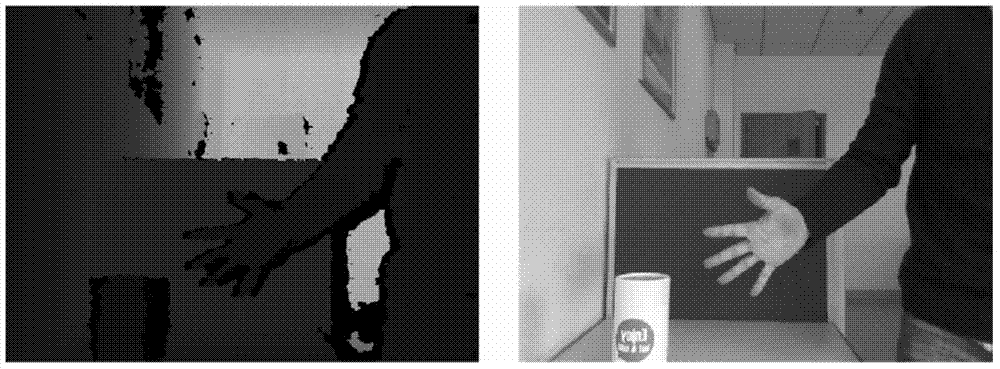Depth image recovery method based on improved bilateral filters
A technology of depth image and bilateral filtering, applied in the field of image processing, can solve problems such as unemphasized wrong depth pixels, limited depth image restoration effect, blurred depth image edge, etc., to achieve clear depth edge, suppress noise, and depth edge clear and neat effect
- Summary
- Abstract
- Description
- Claims
- Application Information
AI Technical Summary
Problems solved by technology
Method used
Image
Examples
Embodiment Construction
[0022] The present invention will be described in detail below in conjunction with specific embodiments. The following examples will help those skilled in the art to further understand the present invention, but do not limit the present invention in any form. It should be noted that those skilled in the art can make several modifications and improvements without departing from the concept of the present invention. These all belong to the protection scope of the present invention.
[0023] figure 1 It shows a depth image and its corresponding RGB color image, that is, RGB-D image, in which the black area in the depth image is a pixel without depth information, which is the "hole" of the depth image. image 3 will be shown in figure 1 Enlarged part of the mid-depth image ( figure 2 left), and overlay this magnification onto the corresponding color image portion ( figure 2 Middle), it can be seen that the pink part should belong to the wall behind the human body, but its d...
PUM
 Login to View More
Login to View More Abstract
Description
Claims
Application Information
 Login to View More
Login to View More - R&D
- Intellectual Property
- Life Sciences
- Materials
- Tech Scout
- Unparalleled Data Quality
- Higher Quality Content
- 60% Fewer Hallucinations
Browse by: Latest US Patents, China's latest patents, Technical Efficacy Thesaurus, Application Domain, Technology Topic, Popular Technical Reports.
© 2025 PatSnap. All rights reserved.Legal|Privacy policy|Modern Slavery Act Transparency Statement|Sitemap|About US| Contact US: help@patsnap.com



